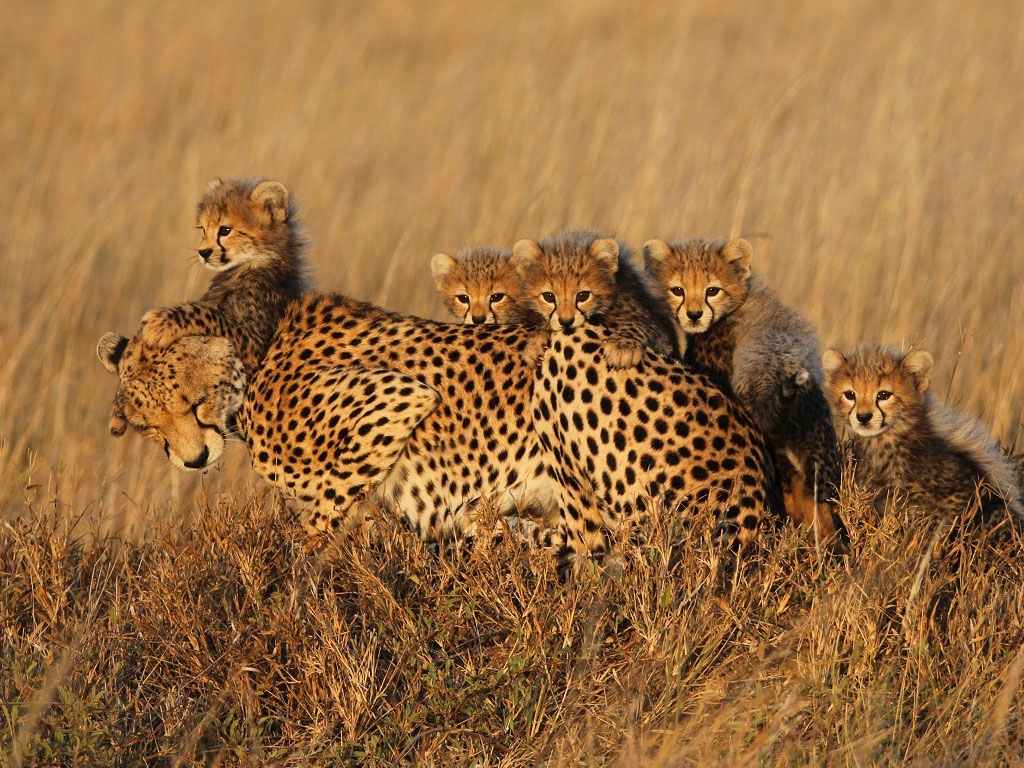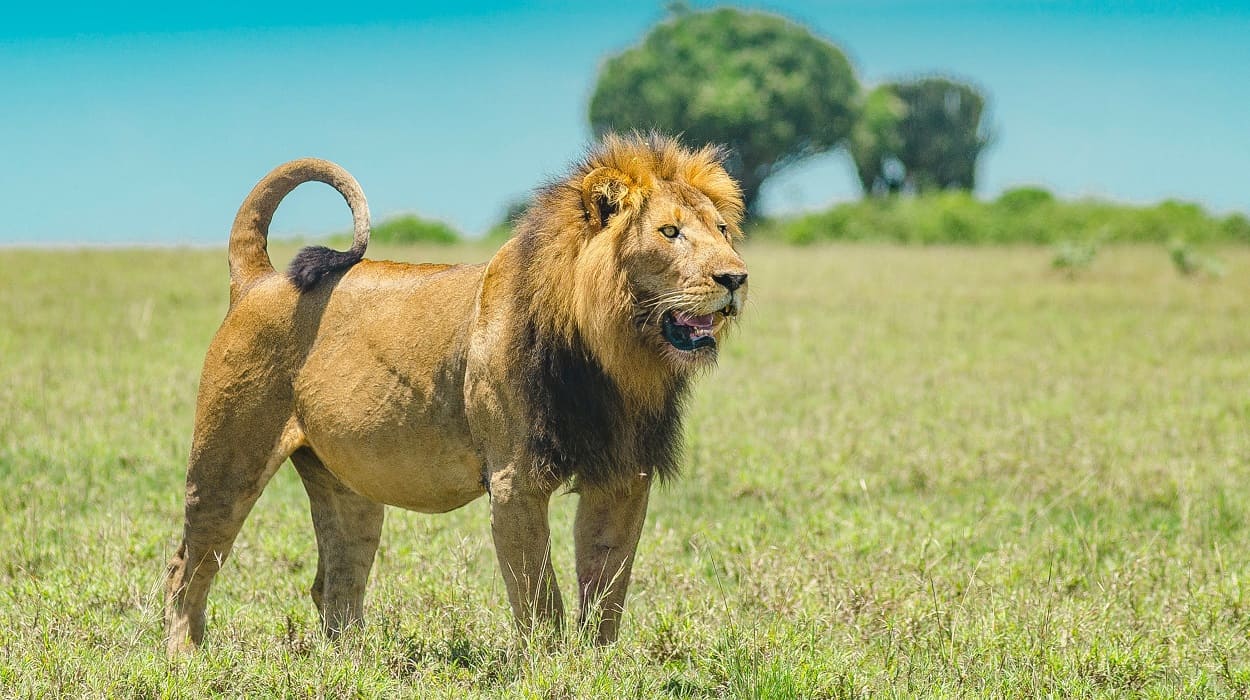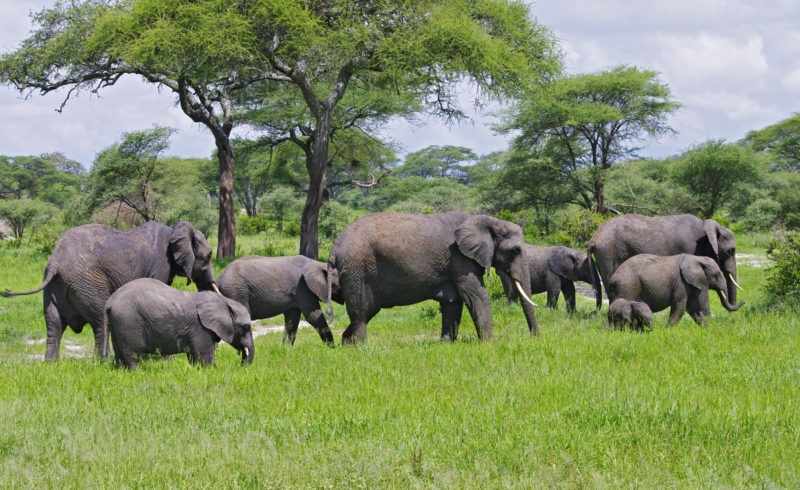
The Big Five in Tanzania: A Wildlife Experience Like No Other
The Big Five in Tanzania: A Wildlife Experience Like No Other. Tanzania, renowned for its stunning landscapes and diverse ecosystems, is one of Africa’s premier safari destinations. When travelers visit the country, they often seek encounters with the legendary “Big Five.” This term refers to five of Africa’s most iconic and sought-after animals: the lion, leopard, elephant, buffalo, and rhinoceros. These animals were originally named the Big Five by game hunters due to the difficulty and danger involved in hunting them on foot. Today, they are more appreciated by photographers and wildlife enthusiasts than hunters. Tanzania offers abundant opportunities to witness these majestic creatures in their natural habitats. Particularly in the country’s famous national parks such as Serengeti, Ngorongoro, and Tarangire.

The Majestic Lion: King of the Serengeti
Without a doubt, the lion (Panthera leo) is the most famous member of the Big Five and the king of the African savannah. Tanzania is home to some of the largest lion populations in Africa. Making it an exceptional destination for witnessing these powerful predators. Lions are social animals, living in prides typically consisting of related females, their offspring, and a few dominant males. The males, with their magnificent manes, are often seen lounging in the sun or patrolling their territory. While the females are the primary hunters. Lions are most active during dawn and dusk. Which is when safari-goers are most likely to see them hunting in the open plains.
In the Serengeti National Park, the lion is at the heart of the ecosystem. Playing a crucial role in controlling the herbivore populations, such as wildebeest, zebra, and buffalo. Observing a pride of lions stalking their prey is a thrilling experience. The annual Great Migration, during which millions of wildebeest and other herbivores cross the plains in search of fresh grazing often attracts large groups of lions. Making the Serengeti one of the best places in the world to witness this apex predator in action.
The Elusive Leopard: Master of Stealth
While lions dominate the plains, leopards (Panthera pardus) prefer to hide in the shadows, making them one of the most elusive members of the Big Five. These solitary, nocturnal hunters are known for their remarkable stealth and agility. With their strikingly beautiful coats adorned with rosettes, leopards are not only difficult to spot but also highly revered for their grace and strength.
Leopards are known to haul their prey high into trees to avoid scavengers such as hyenas and lions. This behavior makes spotting them in the wild even more exciting. As visitors are often treated to the sight of a leopard lounging on a tree branch or feeding on its catch. Tarangire National Park and the Selous Game Reserve are particularly good places to search for these reclusive cats. Though they can be seen in the Serengeti and Ngorongoro Conservation Area as well.
Due to their elusive nature, catching a glimpse of a leopard is considered a highlight of any safari. To increase the chances of spotting one, it’s best to go on early morning or late afternoon game drives, when leopards are more likely to emerge from their hiding places.
The Elephant: Gentle Giants of the Wild
Tanzania’s savannahs are not only graced with fierce predators but also with gentle giants. African elephants (Loxodonta africana) are the largest land mammals on Earth and an iconic symbol of Tanzania’s wilderness. These intelligent and highly social animals live in herds led by matriarchs, and their presence in Tanzania is vital for the health of the ecosystem, as they play a key role in shaping the landscape by uprooting trees and creating pathways for other animals.
Elephants can be seen throughout many of Tanzania’s national parks, but they are especially abundant in Tarangire National Park, which is known for its massive elephant herds. During the dry season, elephants flock to the Tarangire River, offering an unparalleled opportunity to observe these creatures up close. The sight of a herd of elephants moving across the savannah, their trunks swaying and their ears flapping, is truly awe-inspiring. Serengeti and Ngorongoro also provide excellent opportunities for elephant encounters, particularly in the woodlands and near water sources.
Despite their size, elephants can be surprisingly gentle and have a complex emotional range. Watching these creatures interact—whether they are playing in the mud, helping a young calf, or mourning the loss of a member of their group—is an experience that leaves a lasting impression on any safari-goer.

The Cape Buffalo: Unpredictable and Resilient
Though not as glamorous as the lion or as majestic as the elephant, the Cape buffalo (Syncerus caffer) is no less impressive. Known for its unpredictable and sometimes aggressive behavior, the buffalo is a formidable member of the Big Five. These massive, muscular animals can weigh up to 1,000 kilograms and are often seen in large herds grazing on the savannahs.
Buffaloes are highly social animals, and their large herds serve as protection against predators such as lions and hyenas. However, despite their size and strength, they are vulnerable to attacks when separated from the herd. This vulnerability is why buffaloes are often referred to as one of the most dangerous animals in Africa, especially when injured or cornered.
In Tanzania, buffaloes are commonly found in the Serengeti, Ngorongoro Crater, and Ruaha National Park. While they may appear docile while grazing, they can quickly become aggressive if they sense danger. Thus making encounters with them both thrilling and unpredictable. Watching a massive herd of buffaloes moving together, their heads adorned with impressive horns, is a powerful reminder of the wildness and resilience of Africa’s wildlife.
The Rhinoceros: The Rarest of the Big Five
Of all the Big Five, the rhinoceros is the rarest and most endangered, primarily due to poaching driven by the illegal trade in rhino horns. Tanzania is home to both black and white rhinoceroses, though they are exceedingly rare and difficult to spot. The black rhino (Diceros bicornis), in particular, is critically endangered, with only a small population remaining in protected areas.
The best place to see rhinos in Tanzania is within the Ngorongoro Crater, where conservation efforts have helped to protect a small population of black rhinos. Ngorongoro’s vast, enclosed environment provides a safe haven for these remarkable animals. Despite their bulky appearance, rhinos are fast runners and can be quite aggressive when threatened. Observing a rhino in the wild, with its prehistoric appearance and imposing horn, is a rare and privileged experience. Offering a glimpse into a species that has survived for millions of years but now faces the threat of extinction.

Conclusion: Witnessing the Big Five in Tanzania
Encountering the Big Five in Tanzania is more than just a checklist experience. It is an immersion into the heart of Africa’s wilderness. Each of these animals plays a vital role in the ecosystem. From the lion’s role as a top predator to the elephant’s impact on the landscape. Seeing them in their natural habitat allows travelers to appreciate not only their beauty and power but also the delicate balance of life in the wild. Whether you are watching a lion on the hunt, spotting a leopard lounging in a tree. Or witnessing the sheer strength of an elephant. Tanzania offers unforgettable moments that connect visitors with nature in its rawest form. The country’s national parks and game reserves provide the perfect backdrop for these encounters. Thus ensuring that the legacy of the Big Five lives on for generations to come.
Related Posts;






